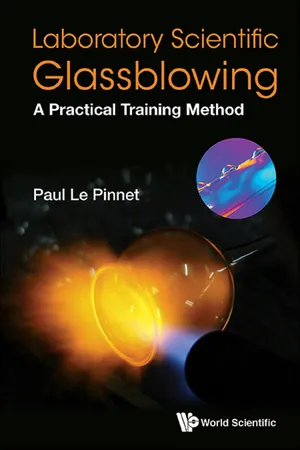![]()
1
Glass Technical Data
The figures should be used for reference only. Data for design and product application should be taken from the respective Company’s technical data.
Working Temperature
This is the temperature at which the glass may be fully reshaped and will sag under its own weight.
Softening Point
This is the temperature at which unsupported glass will begin to sag.
Annealing Point
This is the temperature at which glass will relieve stresses in a matter of minutes. To anneal glass, whether during manufacture or after processing all parts of the glass must be cooled uniformly from over the annealing point to under the strain point.
Strain Point
The extreme upper limit of serviceability for annealed glass and above which permanent stress can be induced into a glass. The maximum “inservice” temperature is always below this point.
Coefficient of Thermal Expansion
The property of a material to expand in size as the temperature is raised. Most glasses have a relatively linear expansion rate between 0°C and 300°C.
The lower the expansion, the greater the resistance of a glass to sudden temperature changes. Glass with an expansion coefficient of 33 × 10−7°C would mean that a one metre long rod will expand 0.33 mm when heated an additional 100°C.
7740 Corning Pyrex
| Thermal expansion 0–300°C = | 32∙5 × 10−7°C |
| Strain point | 510°C |
| Annealing point | 560°C |
| Softening point | 821°C |
| Working point | 1252°C |
8330 Schott Duran
| Thermal expansion 0–300°C = | 33 × 10−7°C |
| Strain point | 525°C |
| Annealing point | 560°C |
| Softening point | 820°C |
| Working point | 1260°C |
KG-33 Kimble KIMAX
| Thermal expansion 0–300°C = | 32 × 10−7°C |
| Strain point | 513°C |
| Annealing point | 565°C |
| Softening point | 827°C |
| Working point | 1255°C |
Kavalier Simax
| Thermal expansion 0–300°C = | 33 × 10−7°C |
| Strain point | 510°C |
| Annealing point | 560°C |
| Softening point | 820°C |
| Working point | 1260°C |
These hard borosilicate glasses “3.3” are characterised by high thermal stability as defined by the international standard ISO 3585: Borosilicate glass 3.3 — Properties (or by the identical Czech version of the standard NISO3585: Borosilicate glass — Properties or German DIN ISO 3585).
The glass fully meets the requirements set down by these standards.
Pyrex 7740 and Duran 8330 belong to this same class.
Soda-lime Glass
| Thermal expansion 0–300°C = | 93∙5 × 10−7°C |
| Strain point | 473°C |
| Annealing point | 514°C |
| Softening point | 696°C |
| Working point | 1005°C |
Fused Silica
| Thermal expansion 0–300°C = | 5∙0 × 10−7°C |
| Strain point | 890°C |
| Annealing point | 1020°C |
| Softening point | 1530°C |
| Working point | 2000°C |
Annealing
Annealing is a thermal process whereby the strain induced in the glass from forming or working is removed.
The annealing cycle consists of three stages in an annealing oven.
The temperature increase at a controlled rate (ramp) will depend on the thickness of the glass and mass of the material in the oven.
Dwell time at the annealing temperature is to allow all strain induced in the glass to dissipate and will vary with the wall thickness.
Cool down from the dwell, then from the lower annealing temperature back to room temperature.
After annealing it is advisable that the glassware is viewed under polarised light to ensure that there is no residual strain and the glassware is fully annealed. This in effect is a check on the oven itself.
I tend to set the annealing oven a few degrees above the glass annealing temperature and allow the oven to “cut off ” on reaching temperature. The residual heat within the brickwork of the oven is quite sufficient to anneal the glass as the Dwell time for glass with a 3-mm wall thickness is 5 minutes.
Glassware with much greater wall thickness will require longer Dwell times.
| Wall thickness | Dwell time |
| 3 mm | 5 minutes |
| 6 mm | 10 minutes |
| 9 mm | 18 minutes |
| 12 mm | 30 minutes |
Dwell times for the thicker walled glass must be held at or maintained at the times indicated noting that these are minimum Dwell times.
Annealing ovens are brick lined and therefore there is a great amount of residual heat which will dissipate over time. Be prepared to allow the oven to cool down overnight although sending the oven up during the day is often required but I would advise not opening the oven door until the temperature has dropped below 400°C.
Larger scale production line glass manufacturers use an annealing Lehr. The glassware being placed on a moving bed which traverses the glassware through the Lehr at a controlled speed past various sections of Lehr which are temperature controlled to ramp up the heat, dwell and cool in a continuous system.
Glass annealing Lehrs are suitable only for large-scale manufacture based upon their size alone and energy usage. The speed at which the glass passes through the annealing process is far quicker than the batch process to be found in a workshop although there are various ovens to be found ...
